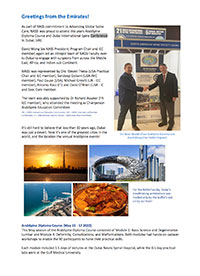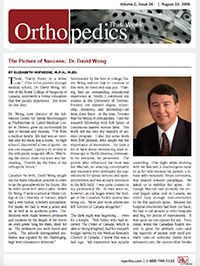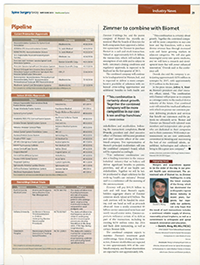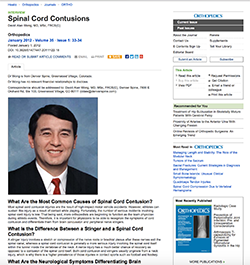Our Physicians
Physician Biography | Dr. Wong's Team | Presentations / Research | Patient Forms | Articles
Dr. Wong Articles
David Wong leads an intrepid team of NASSi Faculty over to Dubai

As part of NASS commitment to Advancing Global Spine Care, NASSi was proud to attend this years ArabSpine Diploma Course and Dubai International Spine Conference in Dubai, UAE.
David Wong (ex-NASS President, Program Chair and IEC member) again led an intrepid team of NASSi Faculty over to Dubai to engage with surgeons from across the Middle East, Africa, and Indian sub-Continent.
NASSi was represented by Drs: Steven Theiss (USA-Practical Chair and IEC member), Sandeep Gidvani (USA-IMC member), Paul Gause (USA), Michael Grevitt (UK - IEC member), Antonio Raco (IT) and David O’Brien (USA - IC and Exec Com member.
The team was ably supported by Dr Richard Assaker (FR- IEC member), who attended the meeting as Chairperson ArabSpine Education Committee.
Click here to learn more.
The Picture of Success: Dr. David Wong
 From the halls of Trinity College to the Presidency of the North American Spine Society, Dr. Wong has cut a distinguished, scholarly, yet eminently approachable figure among spine surgeons. This week’s Picture of Success, Dr. Wong offers one of most articulate and cogent visions of the future of spine surgery we’ve heard yet. To learn more from this extraordinary person, click here or select the article to the left.
From the halls of Trinity College to the Presidency of the North American Spine Society, Dr. Wong has cut a distinguished, scholarly, yet eminently approachable figure among spine surgeons. This week’s Picture of Success, Dr. Wong offers one of most articulate and cogent visions of the future of spine surgery we’ve heard yet. To learn more from this extraordinary person, click here or select the article to the left.
Article credit RRY Publications LLC, www.ryortho.com.
Dr. Wong in Spine Surgery Today
 Read Dr. David Wong, Spine Surgery Today Editorial Board member’s perspective on the Zimmer/Biomet merger. Click here.
Read Dr. David Wong, Spine Surgery Today Editorial Board member’s perspective on the Zimmer/Biomet merger. Click here.
Dr. Wong interviewed by ORTHOPEDICS on the topic of Spinal Cord Contusions
 Most spinal cord contusion injuries are the result of high-impact motor vehicle accidents. However, athletes can sustain this injury as a result of contact while playing. Fortunately, the number of serious incidents involving spinal cord injury is low. That being said, more orthopedists are beginning to function as the team physician during athletic events. Therefore, it is important for physicians to be able to recognize the symptoms of cord contusion and differentiate them from brain concussion and peripheral nerve stingers.
Most spinal cord contusion injuries are the result of high-impact motor vehicle accidents. However, athletes can sustain this injury as a result of contact while playing. Fortunately, the number of serious incidents involving spinal cord injury is low. That being said, more orthopedists are beginning to function as the team physician during athletic events. Therefore, it is important for physicians to be able to recognize the symptoms of cord contusion and differentiate them from brain concussion and peripheral nerve stingers.
Click here to read the complete article interview.
Optimum resolution of concussions requires rest and time
There has been a great progress during the past 10 years in our understanding, evaluation, diagnosis and treatment of concussions. I remember a time when a sideline diagnosis was getting your “bell rung” and the athlete often returned to the game after a short period of observation. We did not realize the full extent of the injury or possible future consequences.
Click here to read the article online.

